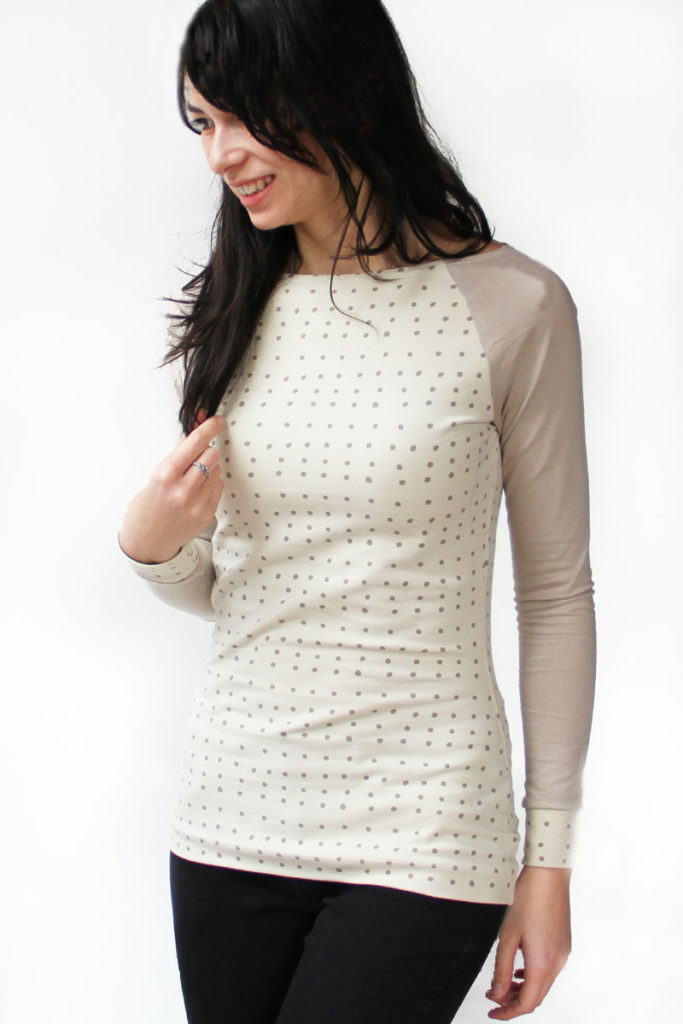I’ve updated this older pattern for a T-shirt with raglan sleeves and a boat neck. It has a close-fitting silhouette and I also narrowed the sleeves and the neckline, so that the T-shirt won’t fall off the shoulders. You can get an updated version of this pattern here: Pattern for women’s T-shirt JACKIE.
Recommended material
The pattern works great with thinner elastic materials. Choose some kind of quality cotton knit with elastane or lycra. Try to avoid 100% cotton knits. They can get stretched out quite easily, so they are not suitable for women's clothing. I would use this type of knit for kid's pajamas (maybe). I have knits featured in this article from Důmlátek.cz. This store is huge, you can take a look at knits with polka dots or all knits with patterns, for example.
Different T-shirt variations
I’ve made this T-shirt with a small variation, compared to the original version (which has facings, instructions here: How to sew a T-shirt with raglan sleeves and neckline facing).
You can also take a look at sewing instructions for my other similar pattern here:
Women's T-shirt with raglan sleeves COMFY
I’ve finished the sleeves of this T-shirt with cuffs (wider stripes of knit) and its boat neck is finished in the simplest possible way.
How to sew the T-shirt
You can sew this T-shirt with a regular sewing machine (if you don’t have an overlock, which is an ideal choice). You might find this article useful if you are going to use a regular sewing machine:
Sleeve pieces preparation
Let’s modify the sleeve pattern piece first. Since I’ve finished the sleeves with the cuffs, I had to adjust the pattern a bit. I wanted to make the cuffs 5 cm long, so I had to shorten the sleeves by 5 cm (measured from the edge of the sleeve - seam allowance is not included).
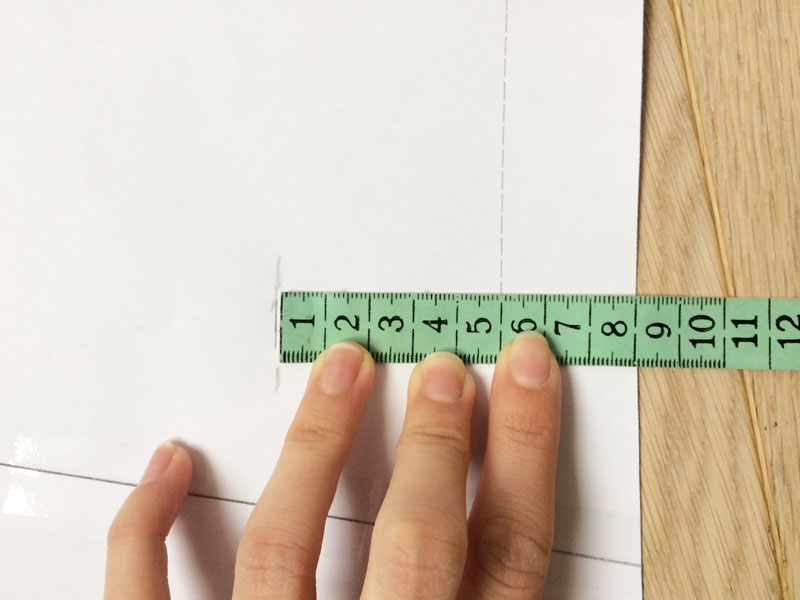
I’ve marked the new length and cut the excess part of the sleeve.
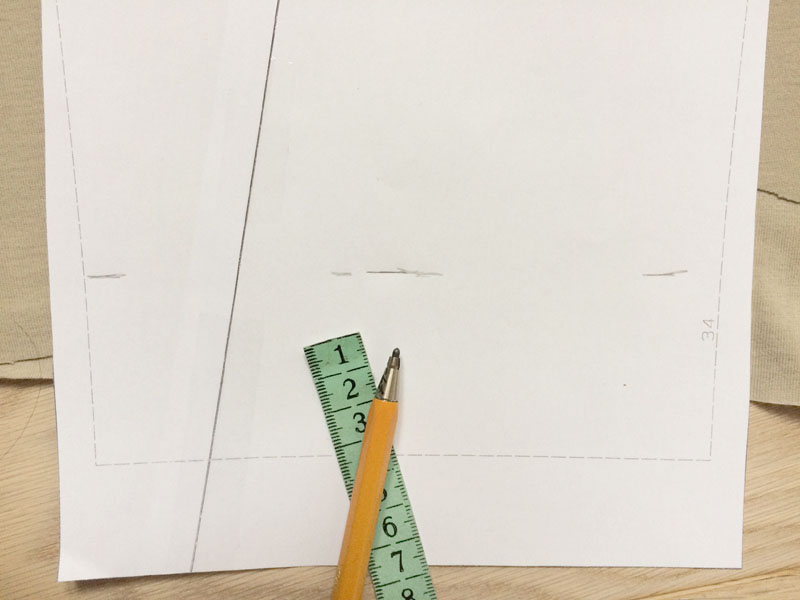
Position the paper piece on the fabric. If you are using a pattern with seam allowances included (from individual sizes view folder), cut along the paper pattern and add a 1 cm seam allowance to the lower edge of the sleeve (cuff connection). If you are using a pattern without seam allowances (classic view - all sizes view folder), add the seam allowances around the entire pattern as usual.
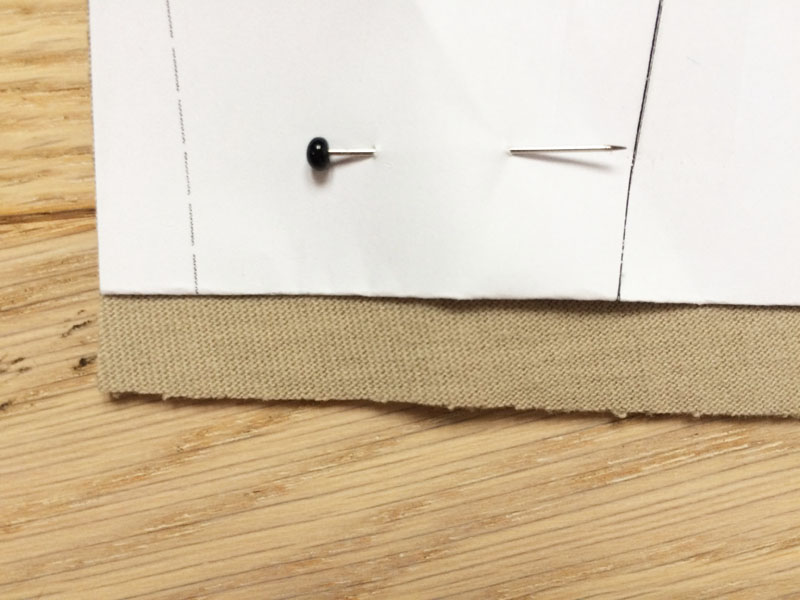
Now is the time to prepare cuff pieces. Cut out two rectangles from your fabric (do not forget that it needs to be some kind of elastic fabric). Make cuffs narrower than the bottom of the sleeve. The difference should be about 2.5 cm when measured like this.
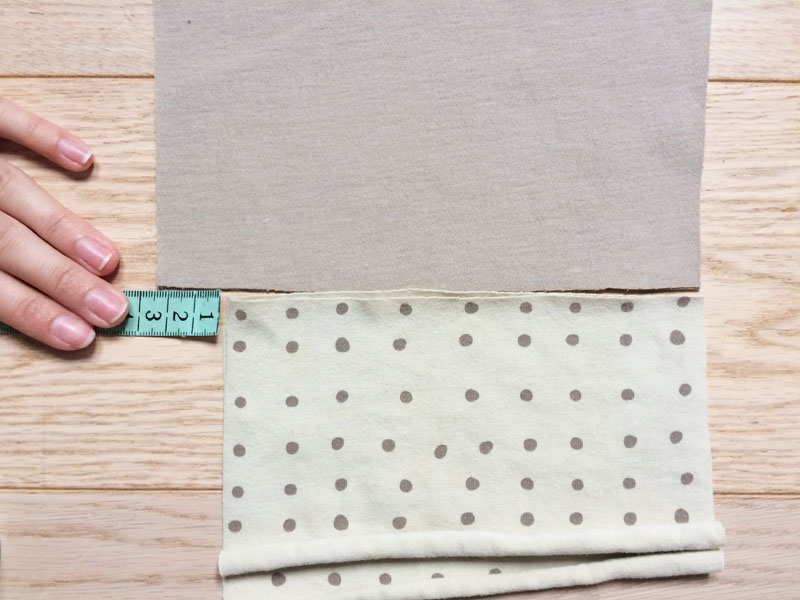
My cuff rectangles are 12 cm long. It’s 2 x 5 cm (desired length of my cuff) + 1 x 1 cm (seam allowance)
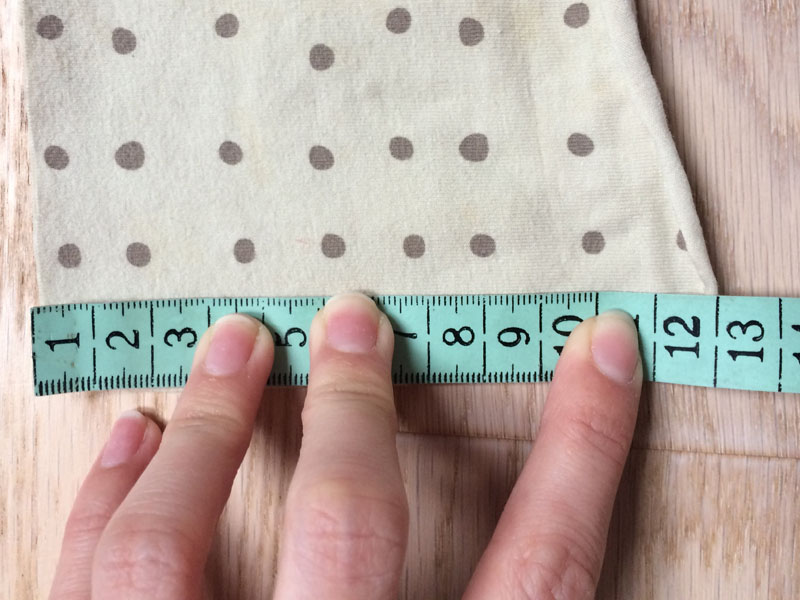
Raglan seams
Sleeve and cuff pieces are ready, so you can now work on raglan seams. Lay the sleeve pieces over the front piece (face side to face side) and pin the front raglan seams.
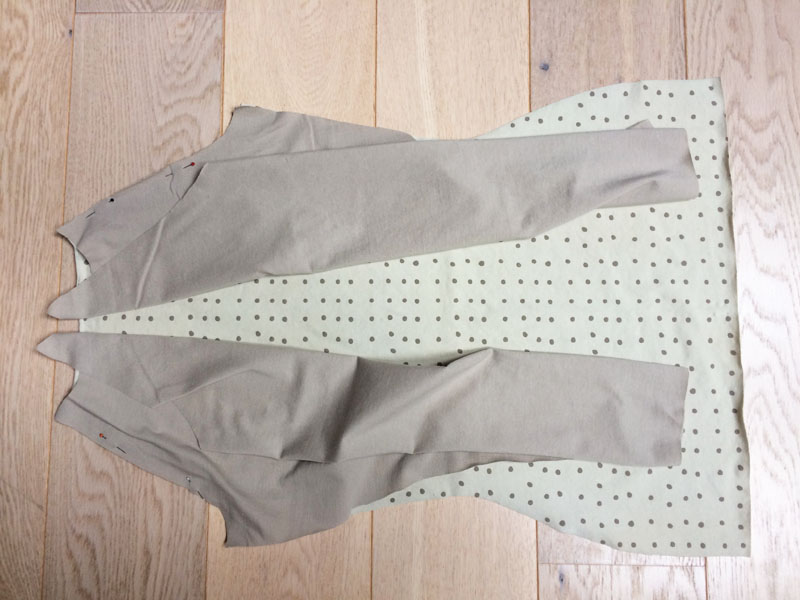
Sew both front raglan seams. Overlock stitch is usually 0.5 - 0.75 cm wide, so you have to cut off the excess part of the seam allowance (with the overlock) to sew along the correct seam line.
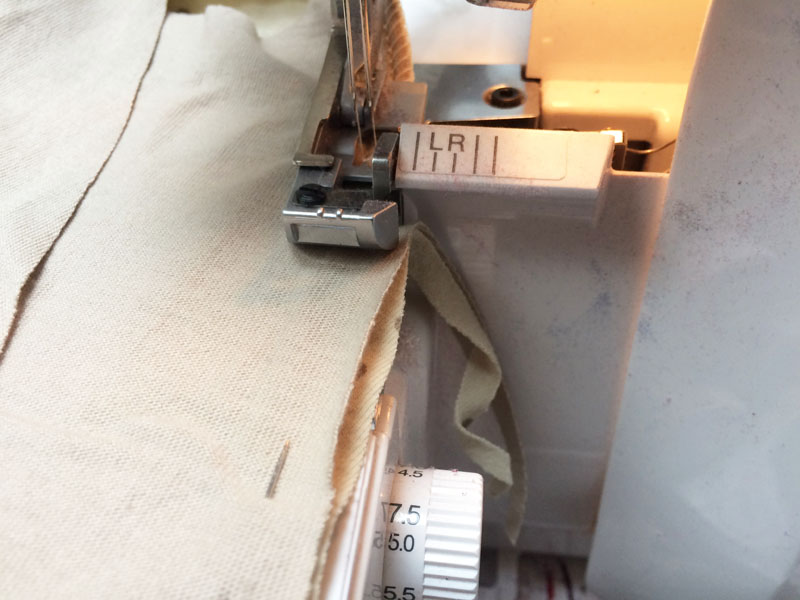
Do not forget to iron the pieces (and seam allowances) when sewing. Press the seam allowances of the front raglan seams towards the sleeve pieces. (Press the seam allowances towards the darker piece when using some kind of translucent fabric for sleeves/front piece)
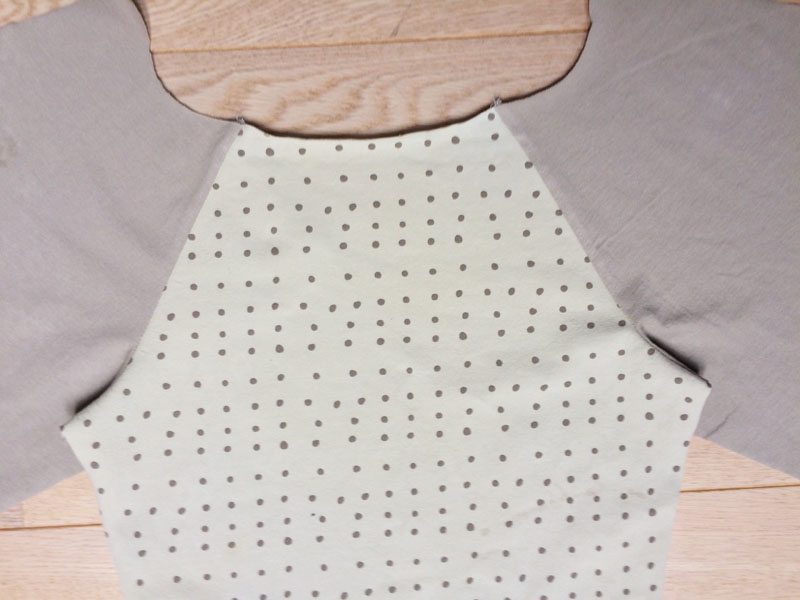
Pin the back piece to one of the sleeve pieces (pin one of the back raglan seams). Sew this seam and work on the other back raglan seam in the same way. Do not forget to keep cutting off the excess part of the seam allowances with the overlock.

Press the seam allowances of the back raglan seams towards the sleeve pieces.
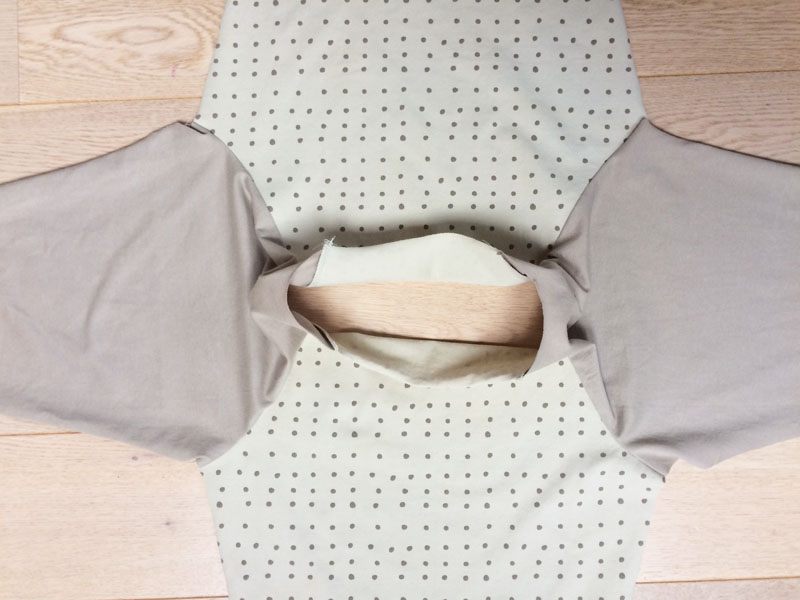
Torso
Pin the sleeve seam and the side seam - align “armpit” ends of the raglan seams nicely.
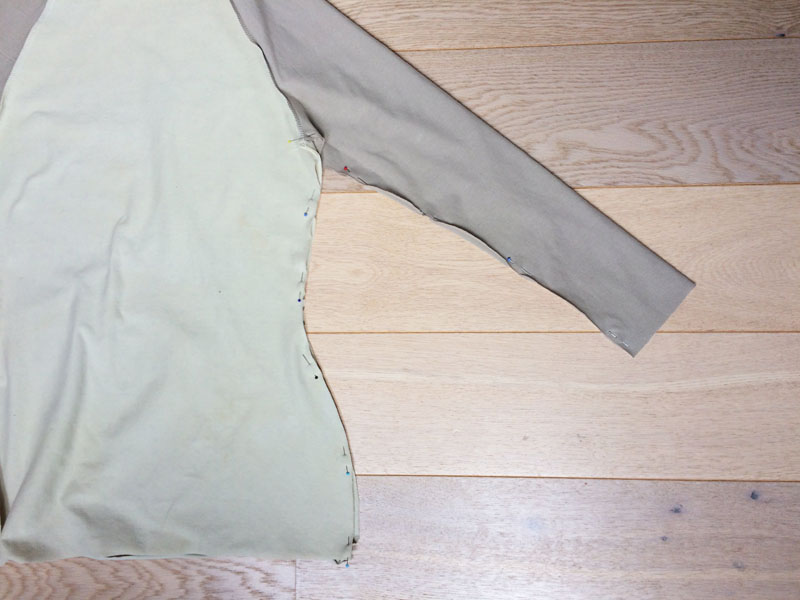
Sew sleeve seam and side seam in one go. Do the other side in the same way.
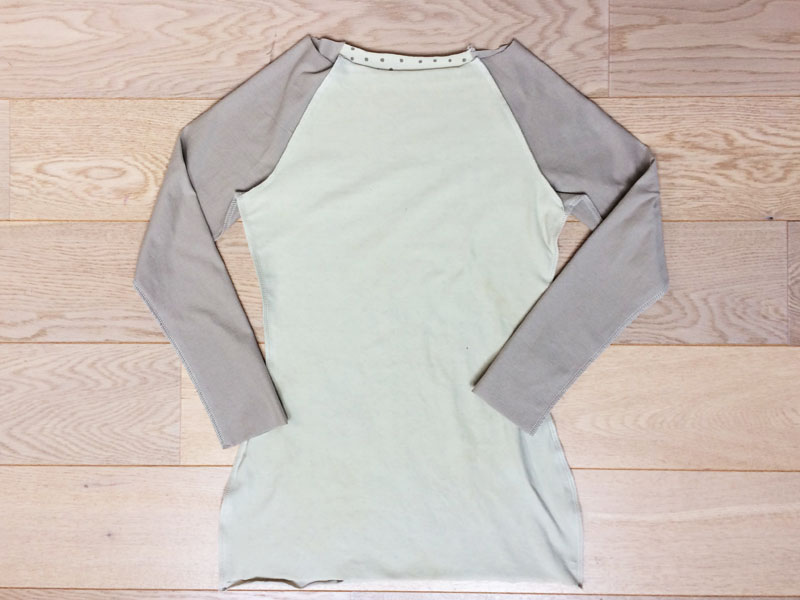
Cuffs
Fold the cuff pieces in half and sew their edges (to form the tunnels like this).
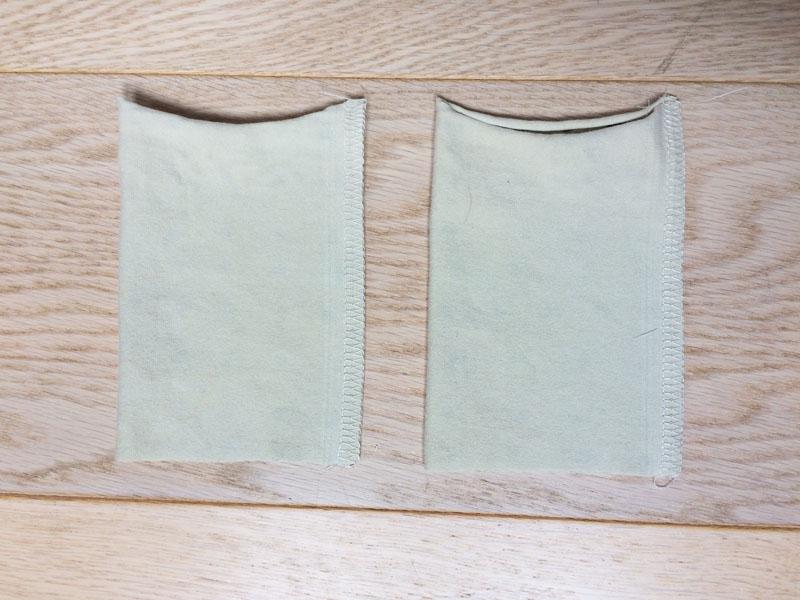
Use a small cut to mark half of the cuff pieces (opposite to the seam - on the fold).
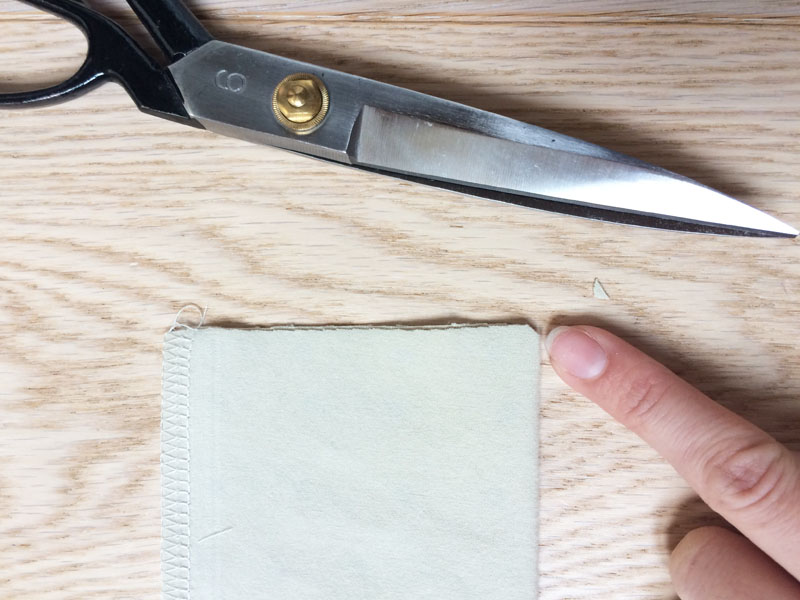
I recommend marking the cuff pieces like this on both ends of the fold.
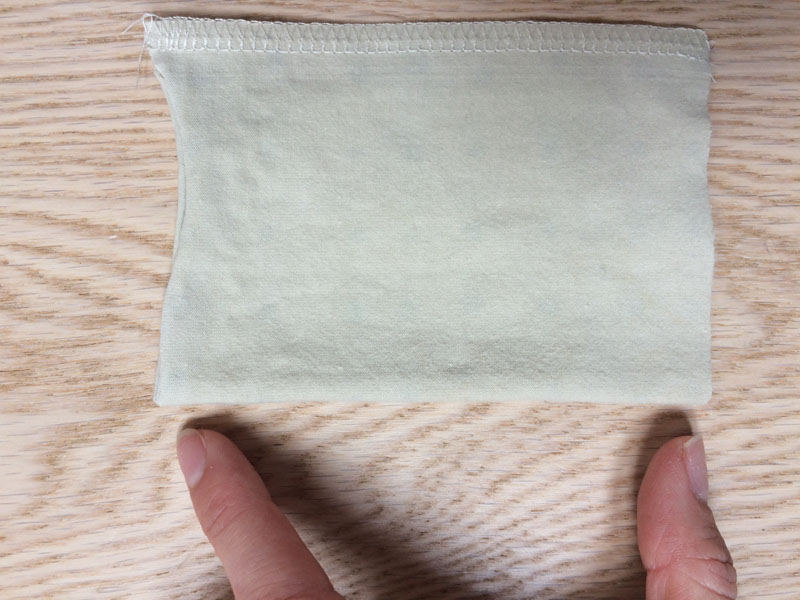
Mark the sleeves in the same way.
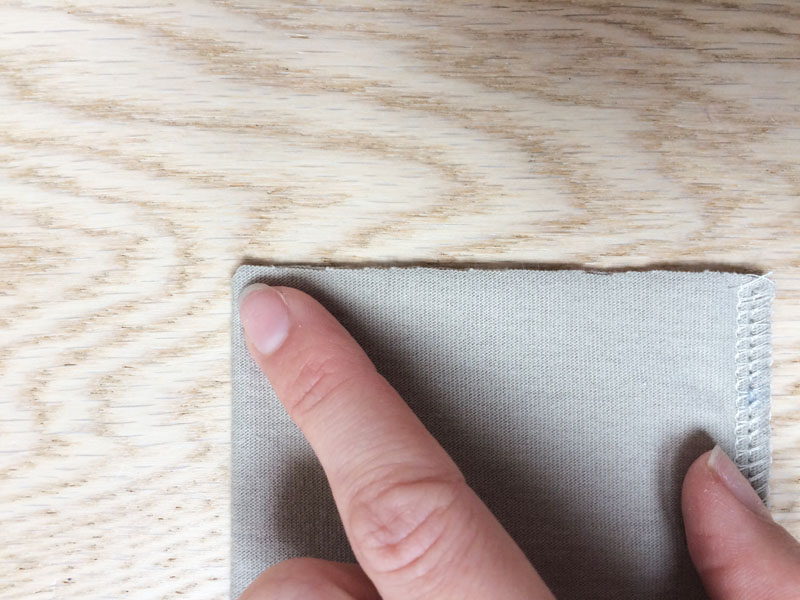
Fold (roll) the cuffs pieces (face side out) to form the “final” shape of the cuff. Marks are aligned.
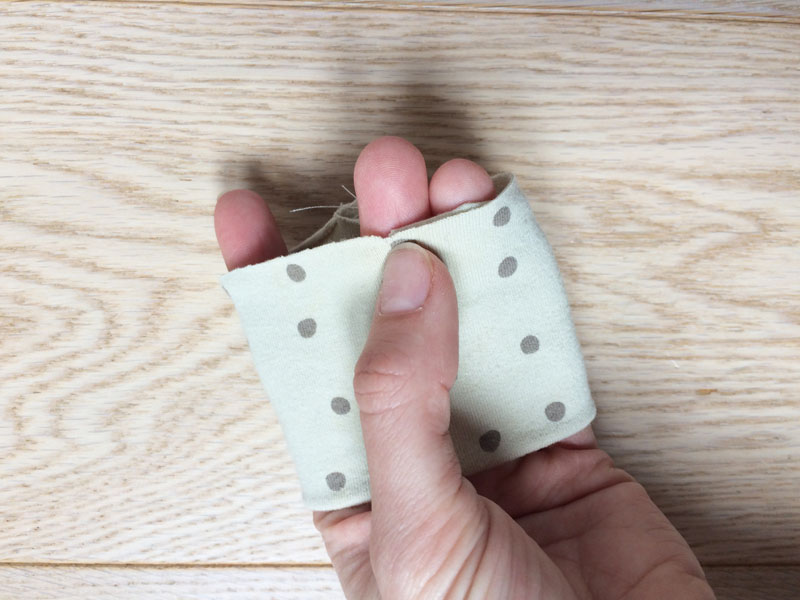
And so are the ends of the cuff seam.

Turn the T-shirt sleeve inside out and insert the cuff inside the sleeve. The face side of the cuff is facing the face side of the sleeve. Align the seam of the cuff with the seam of the sleeve and pin them together. (Fold the seam allowances of the cuff and sleeve in the opposite directions.)
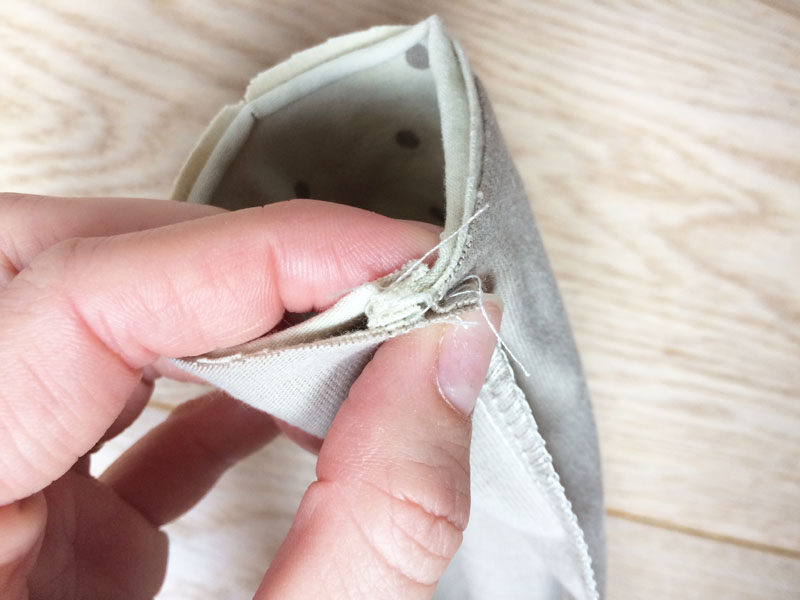
Now align and pin the marks.
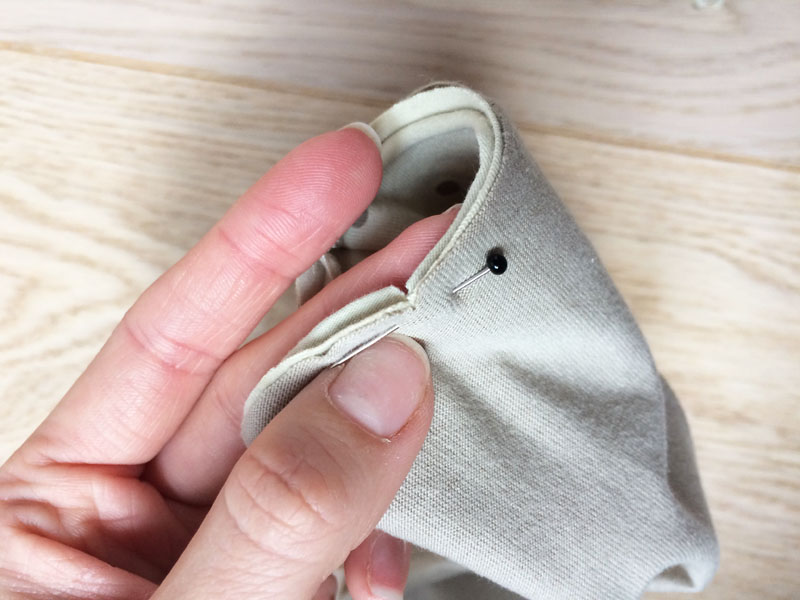
Sew the cuff to the sleeve. I recommend sewing like this - inside the sleeve. It’s easier to hold the fabric layers in place this way.
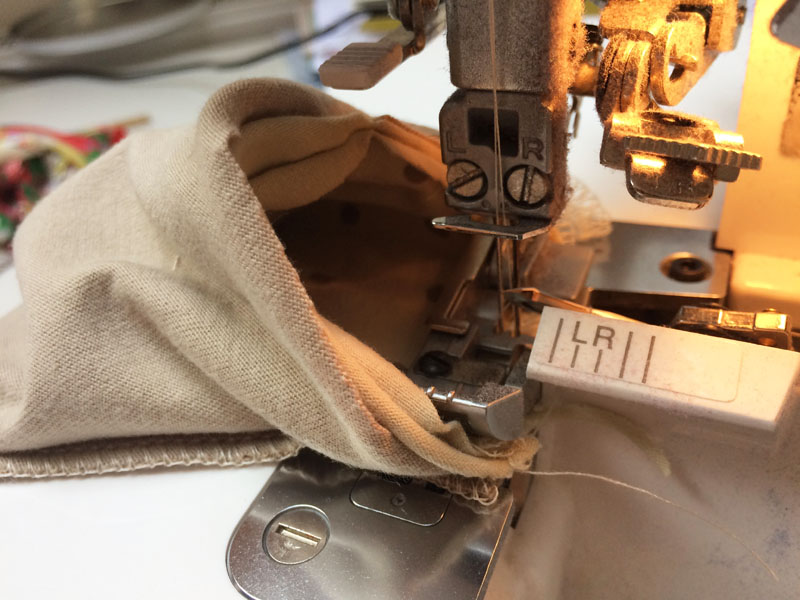
Stretch the cuff slightly when sewing, so you can sew it in evenly.
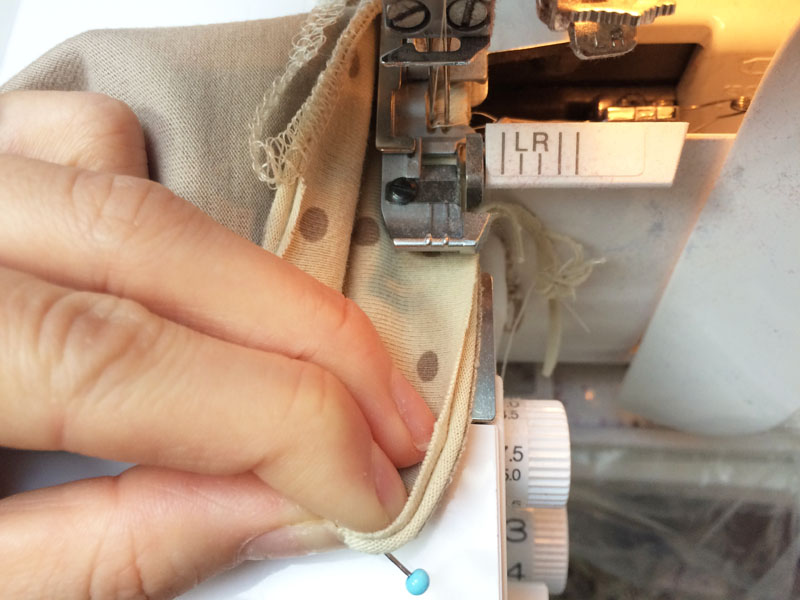
Overlap the seams a bit - extend the seam about 1 - 2 cm beyond its starting point. Lift the foot and turn the fabric so you can “sew out” of the sleeve.
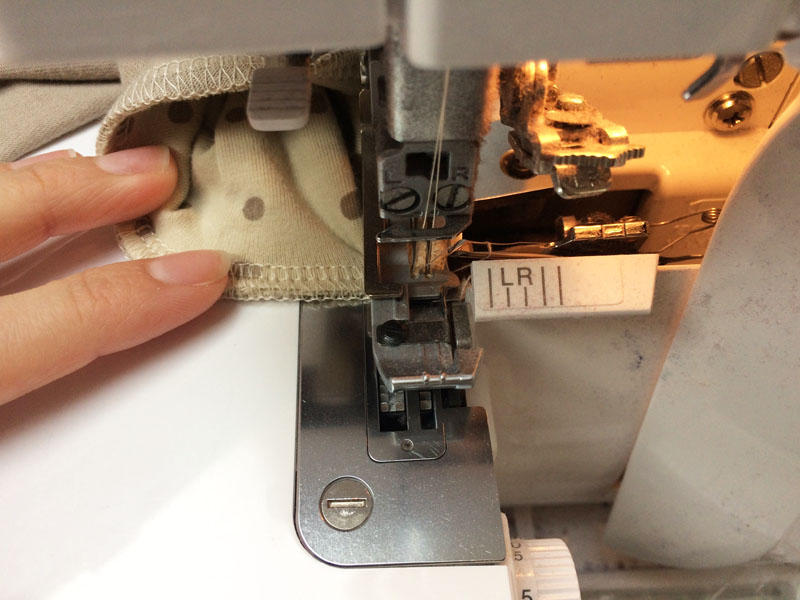
Then put the foot back and sew a bit to create the thread chain. You can make the seams inside the sleeve nicer this way.
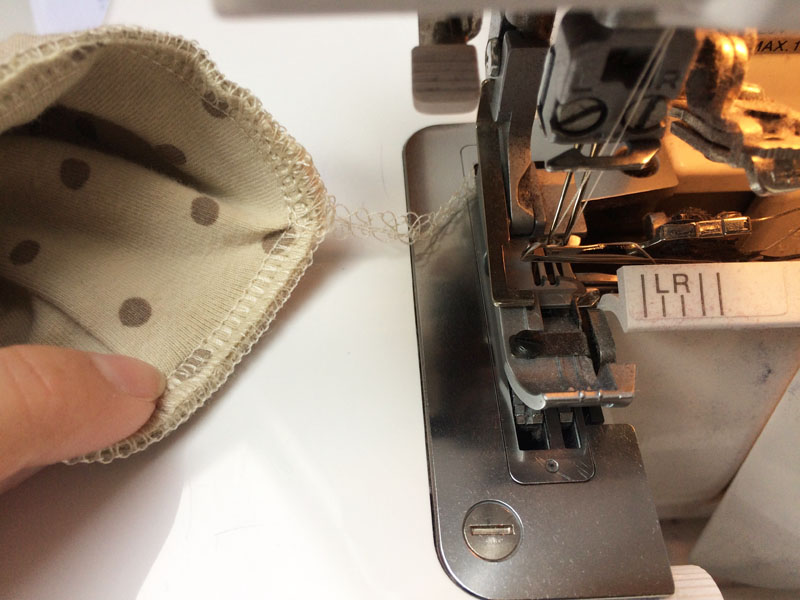
Pull the thread chain under the loops with a blunt needle or hook.
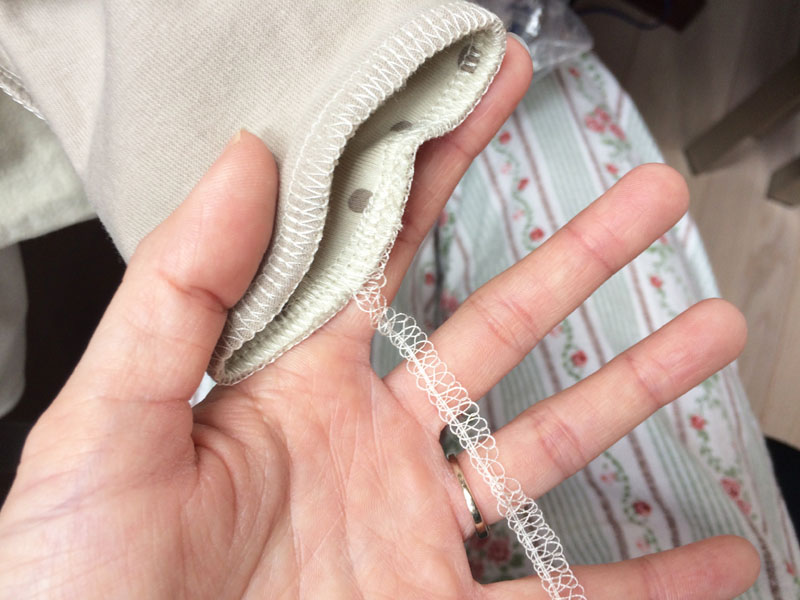
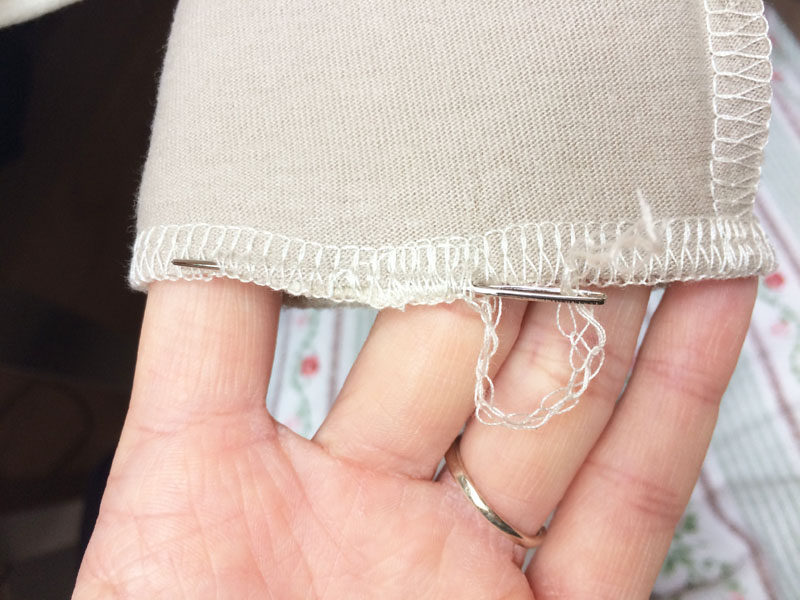
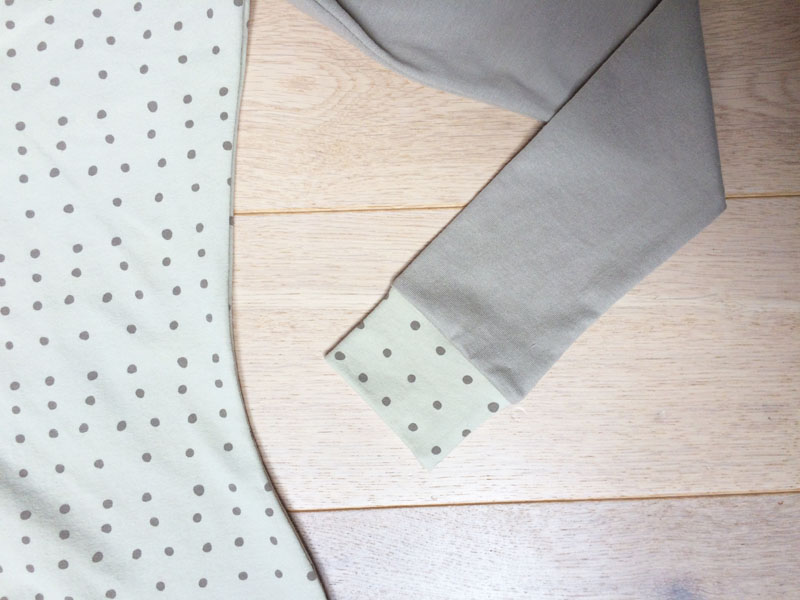
Bottom hem
Clean the entire bottom edge of the T-shirt. Finish this seam the same way you finished the cuff seams. Pull the free end of the thread chain under the loops.
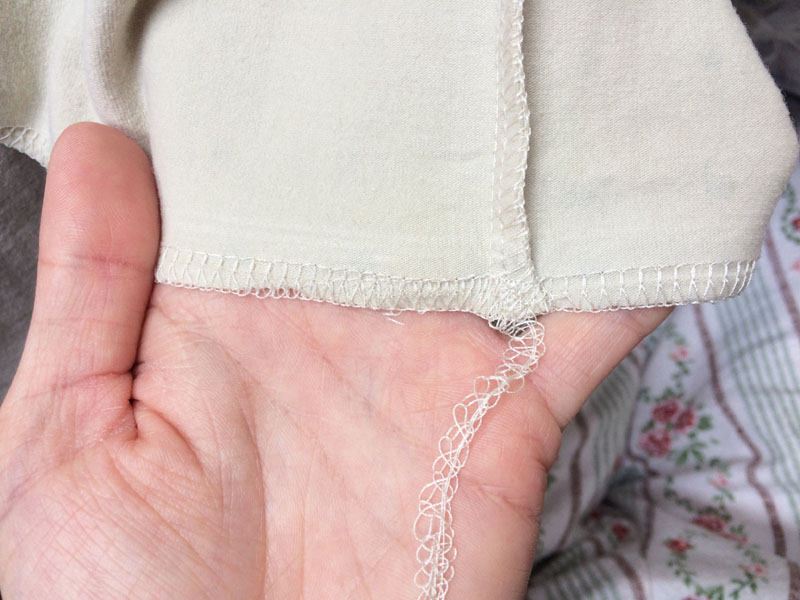
Fold the bottom hem to the reverse side of the T-shirt. The size of the fold depends on the desired size of the seam tab (I recommend making it 3 cm long). Iron the fold.

Sew through the hem along the entire circumference of the T-shirt. I recommend using a twin needle or some kind of elastic seam. Don’t forget to lower the lower thread (bobbin) tension and the foot pressure (if your sewing machine allows it). Start (and end) the seam in one of the side seams.
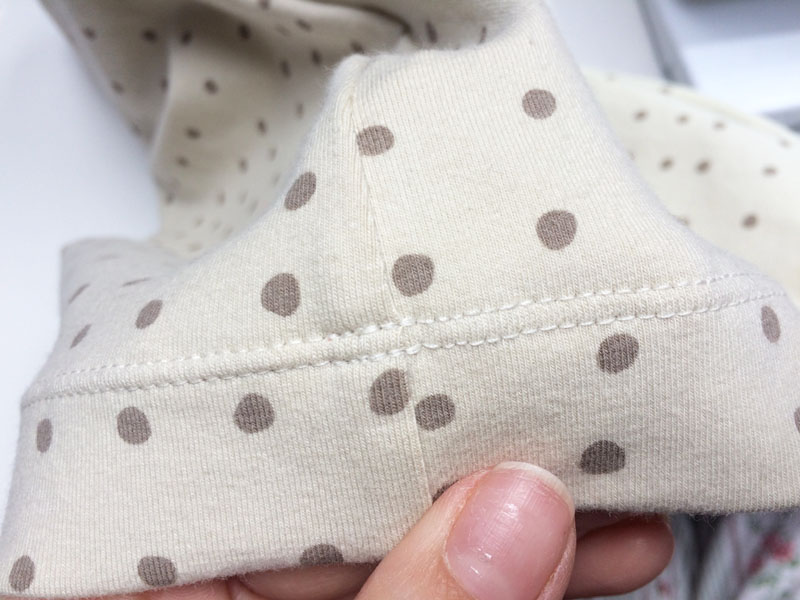
Neck opening
I’ve used the simplest method to do the neck opening hem. It's very quick and the results are usually great.
Clean the neck opening with the overlock. Start in one of the back raglan seams. Seam allowances of the raglan seams point to the sleeve pieces.

Pull the free end of the thread chain under the loops.

I recommend ironing the neck opening after the cleaning.
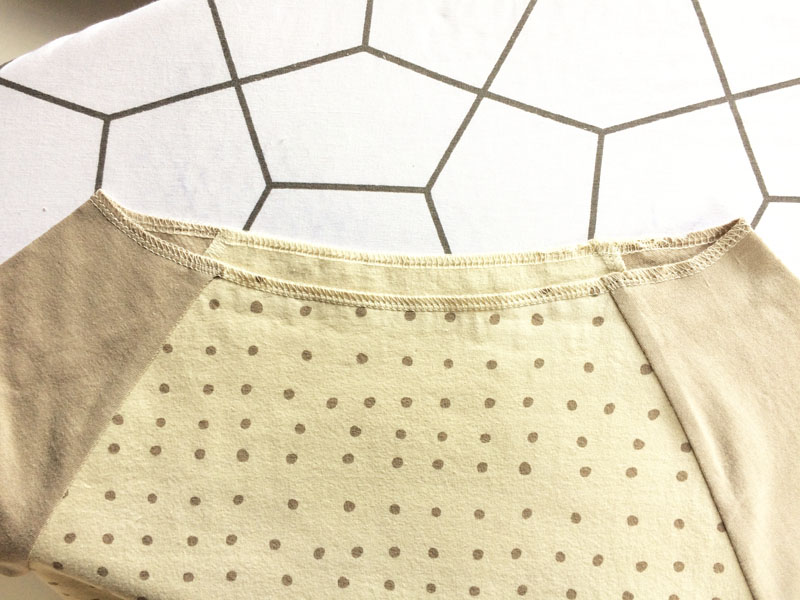
Fold the edge of the neck opening to the inside of the T-shirt and iron the fold.

Sew through the fold (with a twin needle or some type of flexible seam). Start (and end) the seam in one of the back raglan seams.
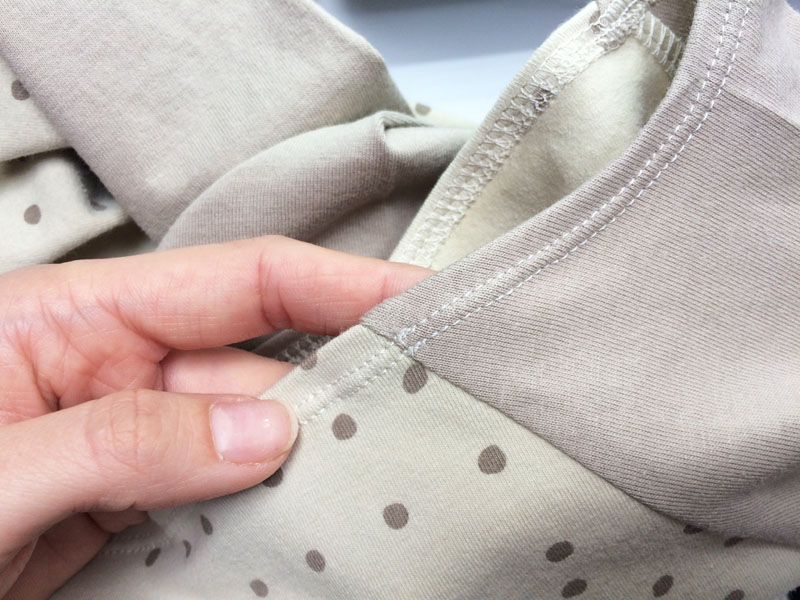
And that’s how you sew the T-shirt with raglan sleeves.
You can get this T-shirt pattern and a similar style dress pattern here:
If you have a moment, leave a comment about how you liked the skirt pattern and today's instructions below the article. Also, tell me what you would like to see next.
Have a nice day, Peťa ♥
